Following consecutive draws against Leicester City and West Ham, Liverpool found themselves nudged off the top of the table for the first time in two months. However, with rivals Manchester City not playing until Sunday, Jurgen Klopp’s side had the opportunity to return to the summit, even if only for 24 hours. Bournemouth, meanwhile, were looking to improve on their lacklustre away record.
In the end, the home side ran out comfortable winners, showing invention and composure in their pursuit of the title. This analysis will show how the Reds managed to break down their latest challengers.
Lineups
Liverpool lined-up in a 4-3-3 formation for this fixture, although Georginio Wijnaldum was given a fluid role to link the midfield with the attack. Furthermore, the front three rotated throughout the game, with Sadio Mane often the central striker. Full-backs Andy Robertson and James Milner were deployed high and wide, with Fabinho and Naby Keita in front of the defence.
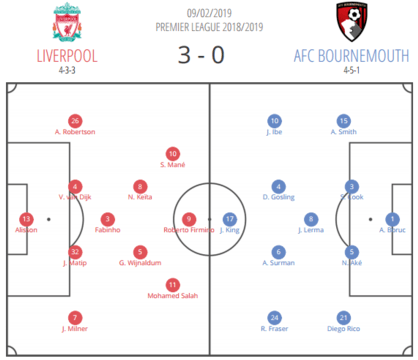
Bournemouth were without key attackers David Brooks and Callum Wilson, with Eddie Howe setting up in a 4-1-4-1. Josh King was left to lead the line on his own, with the support coming from wingers Jordan Ibe and Ryan Fraser on the counter-attack. Jefferson Lerma was given the role of stifling the home side’s progressions between the lines.
Bournemouth deep and compact
The image below shows the Premier League home and away tables for the season so far. While Bournemouth would sit in a European spot based on their form at Dean Court, they would be languishing just a point above the relegation places based on their performances on the road. Heading to title contenders Liverpool on Saturday, very few expected the seasiders to return south with any points in the bag.
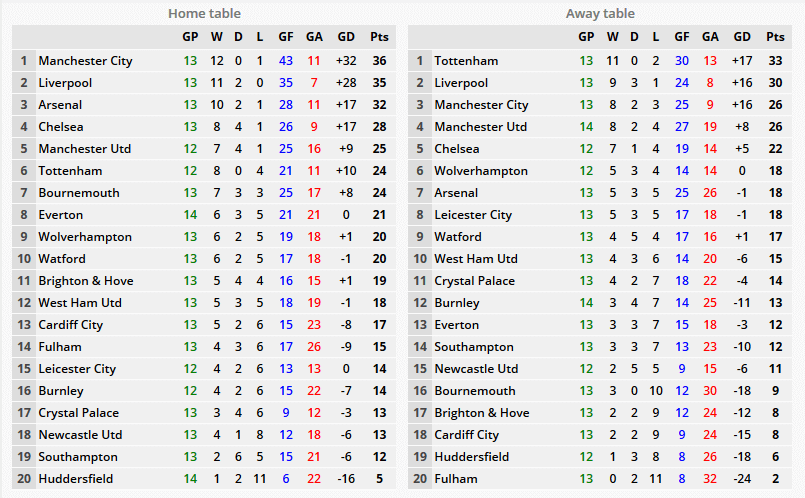
In light of these struggles, and compounded by notable absentees, Eddie Howe elected for a conservative approach at Anfield. Despite having a squad recognised more for their technical abilities than their defensive nous, he appeared to see no alternative option but to sit deep and defend with a compact unit.
Recognising the threat of Liverpool’s front three, Bournemouth looked to close out the space centrally with narrow spacing. They tried to keep the distances between players short both horizontally and vertically, hoping to force the Reds out wide before dealing with any subsequent crosses. They rarely applied pressure before the ball came into their block, choosing instead to play a more passive game.
The image below represents a typical shape formed by Bournemouth in their established defensive phase. One bank of four formed behind another of five, while Josh King provided the out-ball up front. The defender closest to the Liverpool player on the ball was often tasked with pressing, as can be seen by Surman in this instance.
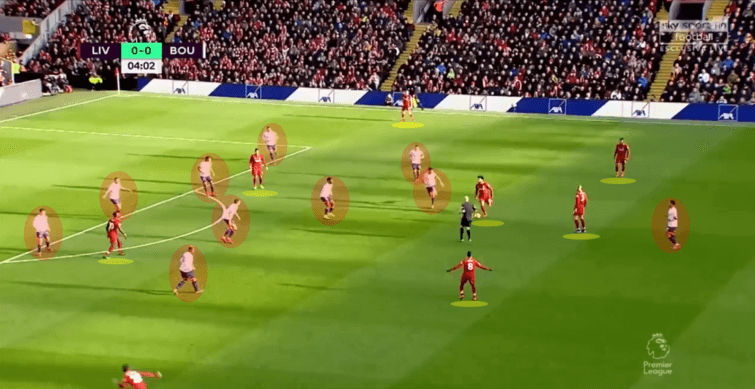
On the occasions when they did have the ball (34%), they didn’t build through their usual methods either. No doubt concerned by Liverpool’s track record of forcing mistakes with high pressure, the away team chose to play it long more often than not in the first half.
The aim was to move the play as far away from their own goal as possible, before getting on the end of second balls. However, given the height disadvantage that their attackers had against the likes of Matip, Van Dijk and Fabinho, they didn’t enjoy much success in this regard.
In the attacking transitions, Bournemouth did display more of a pattern. Wingers Ryan Fraser and Jordan Ibe were given license to carry the play upfield with their dribbling qualities and pace. On the occasions when they managed to do so, they would look to dribble diagonally before combining with supporting teammates to create an opening. Chances were few and far between, however, and Liverpool were generally very effective in their defensive transitions.
With Robertson and Milner hugging the touchline on either side of the opposition’s penalty area, they were tasked with making secondary recovery runs to support the holding midfielders on either side. Whenever Ibe tried to carry via the flanks, Keita rushed across with angled pressing, blocking off any potential forward passing lanes.
Robertson chased back to support his teammate in closing out the space and forcing a turnover. The same applied on the other side, but neither Van Dijk or Matip found themselves in many one-on-one scenarios in the channels. The image below shows how well Liverpool managed Bournemouth’s attempts to counter.
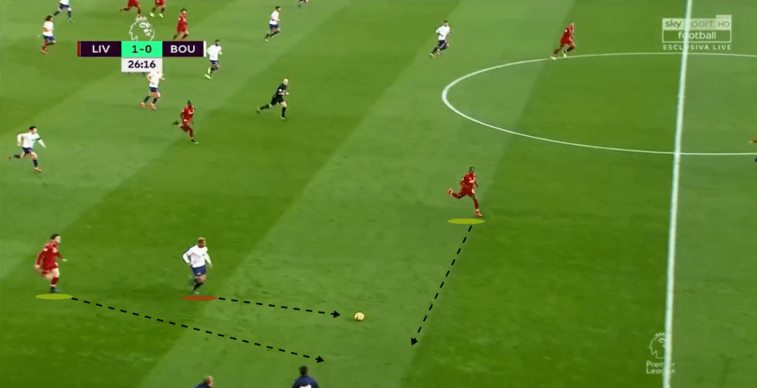
Overall, Bournemouth failed to show much going forward, with Liverpool outnumbering them and coping well with the attacking strategies posed. The away side managed just two shots on target all game, with the closest effort well-saved by Alisson in the second minute. Additionally, their defensive approach was to prove ineffective, as we will discover.
Liverpool’s strategies to disorganise
With many already labelling them as bottlers for surrendering a seven-point lead in the space of a month, the pressure was on Liverpool to show otherwise. Bournemouth’s decision to deploy a deep defensive unit wasn’t expected to aid these efforts and was likely to test the Reds’ patience under the spotlight.
They managed to pass the test with flying colours, storming into a 3-0 lead within 48 minutes. They deployed numerous methods for shifting the away team’s defensive block, displaying their ability to adapt to different opponents once again.
Their positional setup saw Salah, Firmino, and Mane swap roles throughout the game. However, Salah’s tendency was to either cut inside from the right to shoot from range, or make runs into the limited space behind Bournemouth’s defence. Firmino favoured the inside-left position, but enjoyed relative freedom between the lines. Mane played mostly from a central berth, hoping to continue his recent goalscoring run.
Despite each leaning towards these positions, their movements were varied in an attempt to draw defenders out of space.
The positional play of Wijnaldum was also crucial in their attempts to create openings, with the Dutchman drifting across the space between lines, dropping off to link play, and arriving in the final third from deep. The image below shows their fluid positional lay-out in central areas.
Milner has taken up the advanced half-space on the right, with Salah moving out to the touchline. Mane drops off the front-line to drag Adam Smith out of the space, while Firmino attempts to stretch the Bournemouth back-line further.
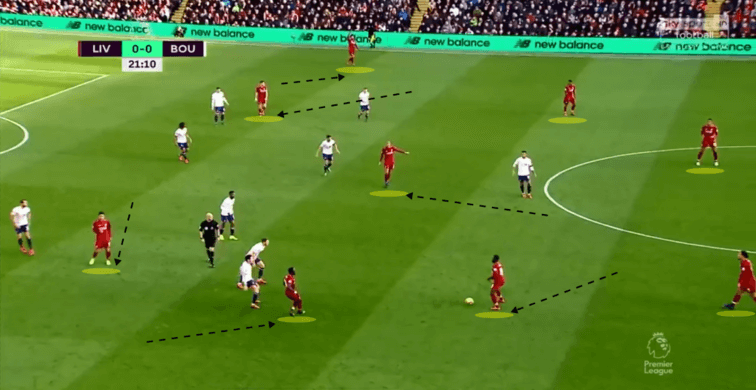
Keita and Fabinho looked to feed the attackers with penetrative passes through Bournemouth’s defensive lines. They also often tried to draw opposing midfielders out with dribbles into the crowd before releasing the ball quickly in the hope that their teammates would be able to exploit the vacated space. In general, the pair sat in front of the defence to circulate possession and manipulate the opponent’s shape.
They were also important in protecting against the counter-attack. Keita in particular enjoyed a hugely impressive performance, as highlighted by the pass map below. He made 63 passes overall, with a 91% rate of completion. As well as helping to build the play, he also used his dribbling qualities to carry the ball into the final third at times.
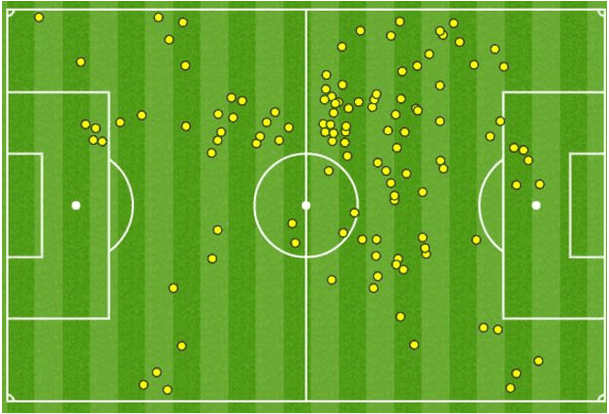
In order to stretch Bournemouth’s backline horizontally, Robertson and Milner took up the most advanced wide positions. As Klopp’s system of play at Anfield has evolved, the full-backs have experienced a change to their usual starting positions. Rather than starting high and wide, they often start deeper before arriving onto the play and supporting the attack, making them more stable in transitions. Saturday called for a different approach.
With the away team playing narrow, the space existed on either side of their defensive block. Robertson and Milner were tasked with stretching the Bournemouth backline, as well as forcing Fraser and Ibe to stay back. Furthermore, their crossing would be an essential route to goal.
The image below shows the positioning of Liverpool’s full-backs. The wide midfielders face the dilemma of whether or not to follow Robertson and Milner, or cover the half-spaces and prevent passes between the lines. Either the full-backs or the central players were able to profit depending on the marking decisions of Fraser and Ibe.
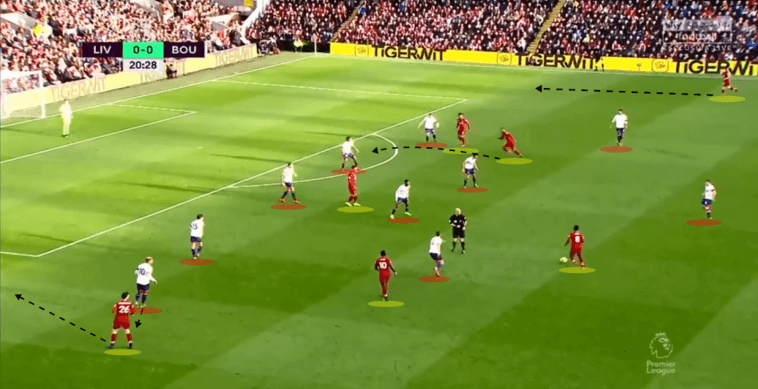
For the most part, Bournemouth dealt well with crosses from the full-backs. However, the first goal came during the second phase following a corner. After the first delivery was cleared, Liverpool recovered possession once more before shifting the ball back out wide.
Bournemouth’s attempts to reorganise their marking were destabilised, leading to a mistake from Dan Gosling. The midfielder stood on the wrong side of Sadio Mane, who headed past Boruc. It was another example of how Liverpool tried to capitalise on any moment of disorganisation with quick actions.
Another way in which Liverpool planned to break their visitor’s resistance was by moving the ball quickly. This was especially true in the transitional moments, as they looked to capitalise on their opponent’s openness, as well as not wanting to give them time to re-organise.
For the second goal, an exceptional lobbed finish from Wijnaldum, Robertson instantly looked for a forward pass following a turnover. On a rare occassion when Bournemouth tried to build through the thirds, Liverpool pressed to dispossess Jordan Ibe. With the Cherries now lacking organisation, Wijnaldum makes a darting run into the gap between defenders, before Robertson picks him out with a perfect lofted pass. The finish from the midfielder is likely to go down as one of the best of the season.
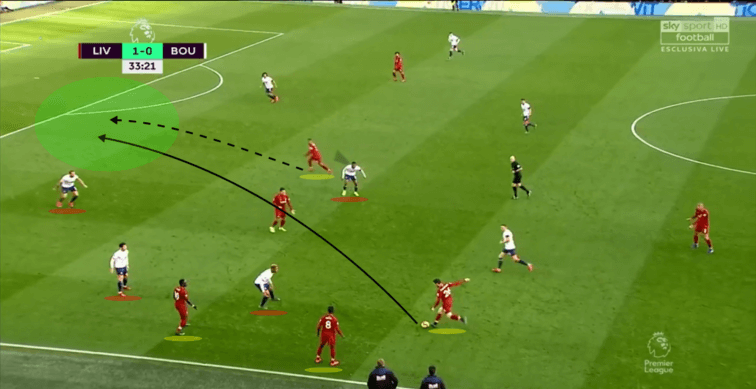
Overall, it was an impressive first-half display from the home side, and they were well prepared to break down Bournemouth’s defensive block. The away side showed little in the way of sustained attacking, and also failed to produce an effective resistance out of possession.
Liverpool protect their lead
With a two-goal lead to protect, Liverpool decided to adjust their set-up going into the second half. Both full-backs reverted to their usual roles of arriving onto the play, as opposed to occupying high and wide starting positions. Meanwhile, the defensive line retreated slightly and the pressing from the front three reduced in intensity.
Bournemouth attempted to build sustainable attacks, with strikers Dominic Solanke and Lys Mousset both entering the fray during the second half. It didn’t result in much of an improvement, however.
Just three minutes after the break, Mohammed Salah got in on the goalscoring act following some quick combinations down the right. The Egyptian broke through to get on the end of an excellent backheel pass from Firmino, scoring his 17th of the season and cementing his bid for a second consecutive golden boot.
The image below highlights the speed of their attack to cut through Bournemouth’s defence. With the back-line pushing further up at the start of the second half, the space exists to exploit in behind. An excellent through ball from Keita finds the run of Firmino, who is supported by eventual goalscorer Salah.
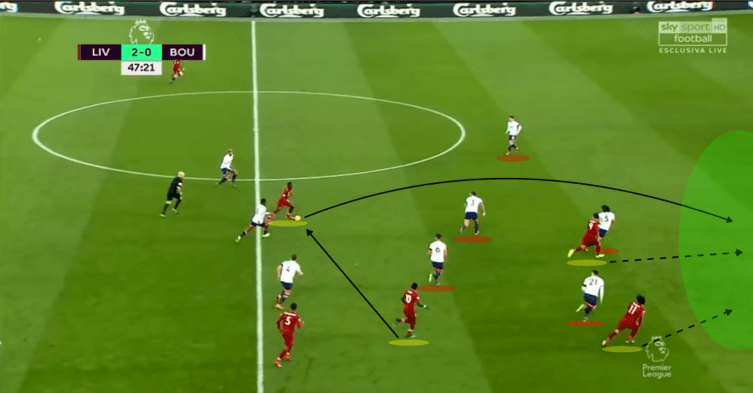
For the rest of the game, Liverpool continued to attack in a controlled manner, with Bournemouth trying to mount a comeback. Despite a few opportunities falling both ways, the match ended 3-0. The home side showed their ability to adapt to the game state, altering their positional play depending on what was required. Their discipline to see out the victory with a clean sheet was impressive, but their opponents didn’t produce enough threat going forward.
Conclusion
With Manchester City winning 6-0 against Chelsea on Sunday, Liverpool remain second on goal difference. For Bournemouth, meanwhile, a ninth straight away defeat leaves them outside the top 10. Relegation isn’t much of a concern, but their form on the road will be for manager Eddie Howe.
While getting to the finish line ahead of Guardiola’s Sky Blues represents a sizeable task, Liverpool do look set to take the race all the away to the end of the season. Tougher tests will come at Anfield, but their ability to change tack in response to their opponents is encouraging in their fight for a first league title in 28 years.
If you love tactical analysis, then you’ll love the digital magazines from totalfootballanalysis.com – a guaranteed 100+ pages of pure tactical analysis covering topics from the Premier League, Serie A, La Liga, Bundesliga and many, many more. Pre-order your copy of the February issue for just ₤4.99 here, or even better sign up for a ₤50 annual membership (12 monthly issues plus the annual review) right here.

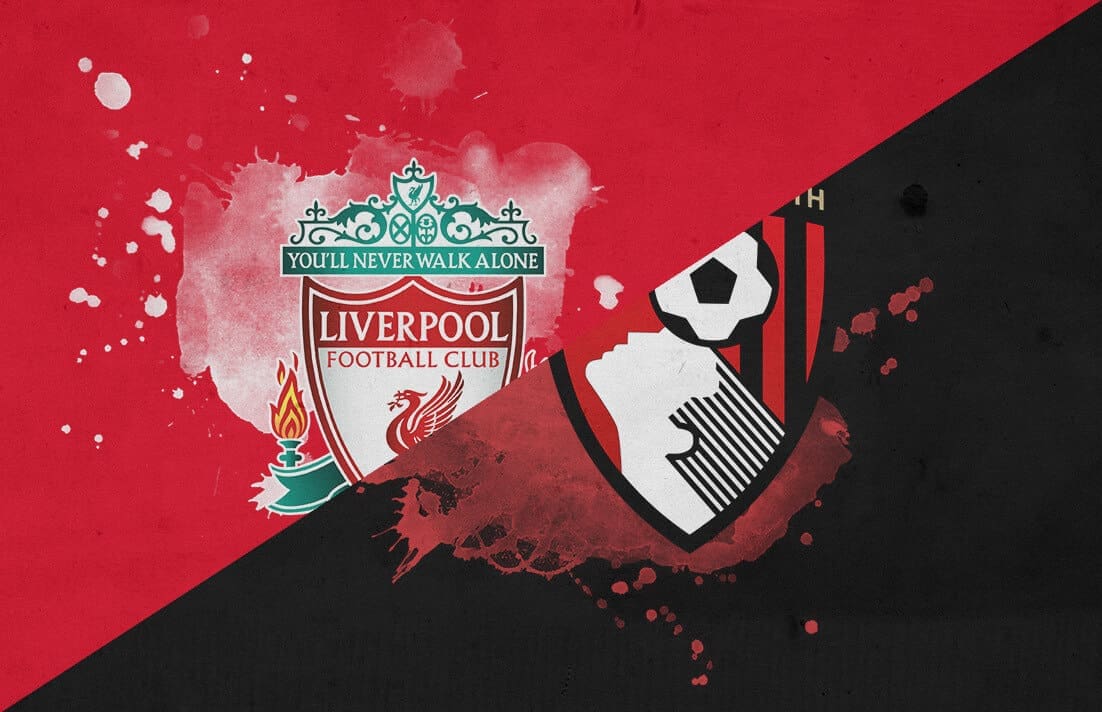



Comments